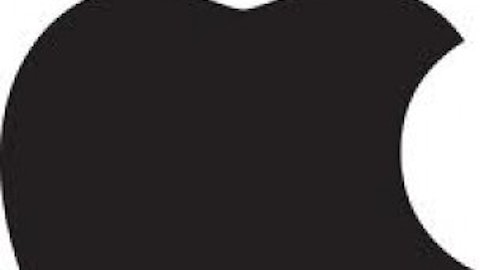
I am a firm believer that a company’s fundamentals are usually the best way to determine whether or not a stock should be bought or sold. That being said, some stocks, especially the popular ones, have a tendency to act the way they do simply because they are in the public eye. Such is the case with Apple Inc. (NASDAQ:AAPL).
Everyone, even those who didn’t normally invest in the stock market, wanted to be a part of Apple’s growth story. Tales were told of ordinary people who bought the stock at $25 in 2000 and sold it for $600 a little more than 10 years later. Holding stock in Apple became somewhat of a status symbol among investors; it was the staple of nearly every portfolio.
Partially because of this unusual obsession, Apple Inc. (NASDAQ:AAPL)’s share price shot up at an astounding rate. In the fall of 2011, its market cap surpassed that of Exxon Mobil Corporation (NYSE:XOM) to make it the most valuable publicly traded company in the U.S, even though the energy giant’s revenue and net income remained well above Apple. It was even suggested by Topeka Capital’s Brian White that Apple would become the first company to have a market cap of $1 trillion.
<— Curious how popular Apple is on Wall Street these days? —>
With so many irrational opinions and unrealistic expectations, Apple Inc. (NASDAQ:AAPL) was doomed to fail. Like a child with expectations that his first snowman will look like Frosty –only to have it look like a randomly thrown together pile of mush—Apple investors were setting themselves up for failure by believing the stock would always achieve the same gains it had in the past.
At the first sign of bad news (less than spectacular iPhone 5 sales), many people got scared and pulled their money, causing a drop in price. Under normal circumstances, the stock price should have dropped to about the level it was at before the iPhone 5 was announced on Sept. 12, 2012, which was about $670. The problem was that these were not normal circumstances—these were bubble circumstances.
Over excitement caused a bubble similar to the dot-com bubble of the late 1990s and early 2000s. It’s true that there were “real” aspects to Apple Inc. (NASDAQ:AAPL)’s price appreciation, but there were definitely bubble characteristics, as well. Read this quote from Investopedia’s definition of a bubble as further evidence of this:
“During the [dot-com] boom people bought tech stocks at high prices, believing they could sell them at a higher price until confidence was lost and a large market correction, or crash, occurs. Bubbles in equities markets and economies cause resources to be transferred to areas of rapid growth. At the end of a bubble, resources are moved again, causing prices to deflate. Thus, there is little long-term return on those assets.”
That does sound a lot like Apple, doesn’t it? People purchased the stock simply because they believed they could sell it at a higher price at some future date, thereby artificially increasing the price completely apart from the fundamentals. That is the textbook definition of a bubble.
Now that we have all that information, what will we do with it? Well, first we will realize that because Apple’s rise was part fundamental and part bubble, any analysis will need to be part-fundamental and part-technical.
Fundamentally, Apple is a great company. It’s currently debt free, and has $110 billion (and counting) on its balance sheet. The company’s sales are still growing year-over-year, up 17% for the first quarter. Net income rose only slightly, however, from approximately $13 billion to about $13.1 billion amid shrinking gross margins, which are the main concern for investors.
As Apple Inc. (NASDAQ:AAPL) has begun producing lower-priced devices, such as the iPad mini, it has cannibalized its higher-end and higher-profit devices, therefore lowering its gross margins. That being said, Apple is still very profitable, with first quarter gross margins being reported at about 41.6%. Apple is also currently yielding a dividend of about 2.4%.
Apple produces devices that range from low-end MP3 players to high-end computers, and is rumored to be working on many other cool gadgets from the iWatch to the iGlasses. Apple’s most popular product by far is its iPhone, which in the 2012 calendar year comprised about $87 billion of its $165 billion in sales, or 53%.

Apple Inc. (NASDAQ:AAPL) also has a huge number of competitors in all areas of its business. Apple’s predominant competitor in smartphone sales is Samsung . In 2012, Samsung sold 206 million smartphones to Apple’s 130 million. Samsung also holds 42.5% of the Android market, which brings us to Apple’s next biggest competitor.

Google Inc. (NASDAQ:GOOG) competes with Apple in the smartphone operating system market and is now attempting to take share in the PC operating systems market, as well, with its Chrome operating system. Google’s Android operating system
dominates the smartphone arena with 69.7%
of the market. Apple’s stake in the iOS market has actually declined within the global smartphone arena while Google’s Android climbed by more than 18%.
In the PC market, Apple Inc. (NASDAQ:AAPL) holds just over 7% with its various Mac OS versions. The major competitor here is Microsoft Corporation (NASDAQ:MSFT)’s Windows, which holds more than 90% of the market share. Because the data only represents desktops and laptops, and does not include tablets, Apple actually has a much higher stake. With tablet sales climbing much faster than PC sales, Apple’s presence in this market with its iPad will definitely give it an edge, and a way to keep growing.
This is about as far as our fundamental analysis will take us. Now to observe the bubble, consider its effects and the likelihood that the deflating process will persist, we will look to the charts. As shown on the first one below, Apple’s stock clearly formed a head-and-shoulders top beginning around the time the iPad 3 was announced on March 7, 2012.

The left shoulder was formed on rather high volume and peaked on April 9 at $636.23. It subsequently began to drop on average volume and bottomed at $530.12 on May 17. When it began to rise again, it did so on lower volume as enthusiasm was less intense coming off the recent $100 drop. It was during the final stages of building the head that the iPhone 5 was announced on Sept. 12, 2012, causing the price to rise quickly over the next week. On Sept. 19, 2012, the peak of the head was established with an all-time high closing price of $702.10.
Two days later, on Sept. 21, 2012, the iPhone 5 was released. Shareholders were unimpressed with the product and the sales, and the stock price fell to the level it had been at when the iPhone 5 was announced. As stated above, under ordinary circumstances the drop would have continued no further, but in a bubble the reaction to bad news is often much worse and may cause the bubble to deflate. The iPhone 5 flop combined with worries over Apple’s post-Steve Jobs’ leadership was the inevitable needle that any stock bubble must someday face.


